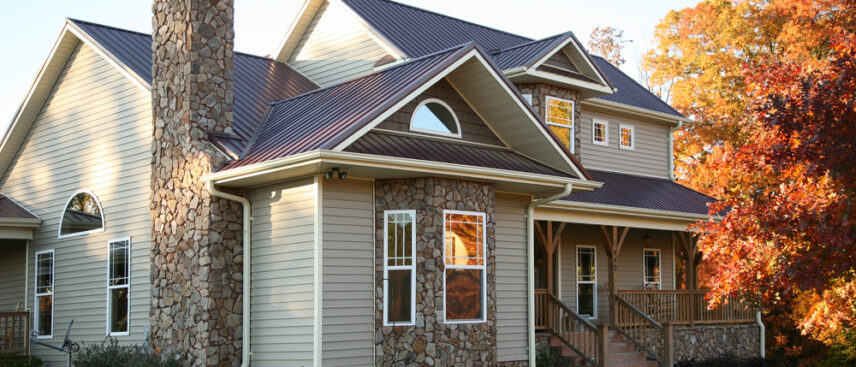When raindrops are falling on your head, it’s time to head indoors. But the type of roof that’s overhead makes all the difference when it comes to keeping those raindrops away. Residential rooftops come in a wide array of materials and all shapes and styles. But whether your roof is gable, flat, shed, or butterfly, you’ll need the best fit to keep you, your family, and your possessions safe from the elements.
Residential roof styles reflect aesthetic choices, but homeowners must also consider the climate, costs, and maintenance when it comes to selecting the type of roof that’s best for their home. Keep reading for an overview of several popular roof styles that fit your lifestyle, location, style, and budget.
Gable Roof
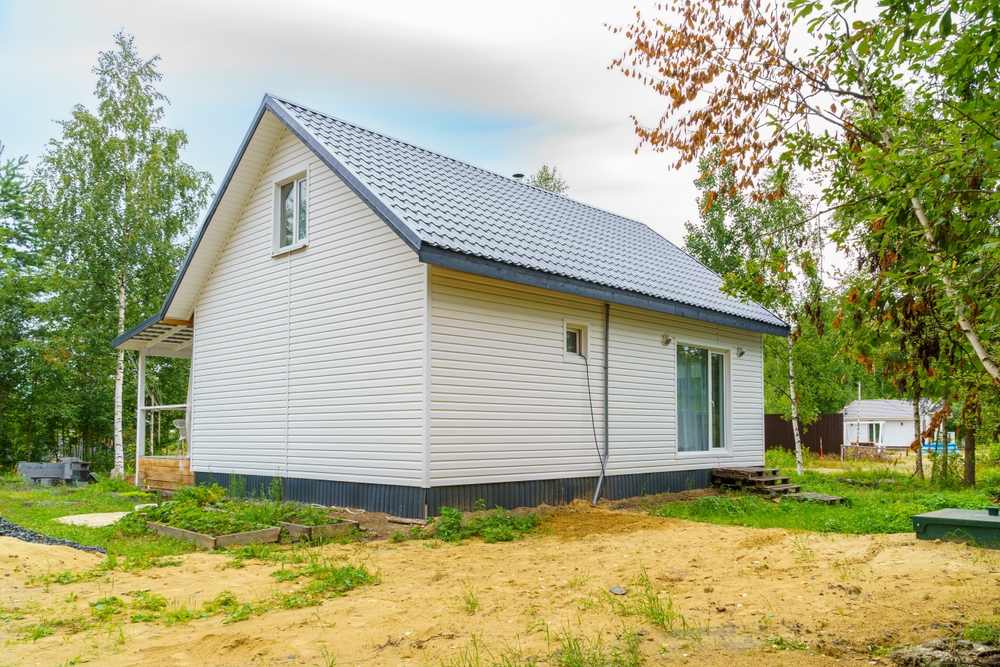
Drive down any residential suburb and you’ll likely spot houses with gable roofs. A gable roof has two sloping sides on each side that meet at a peak, allowing rain water and debris to slide down into gutters. Gables are one of the most common types of roofs, in part because designers can customize them by the degrees of the slope, from steep angles to mild slopes that loop like rolling hills. Gable roofs vary, including Dutch gable, Cross gable, and front gable styles.
Pros:
- Easily allow water and debris to slide off
- Vaulted design maximizes interior space and height
- Excellent ventilation
- Easy installation
Cons:
- Poor energy efficiency; open space requires more heating and cooling
- Requires structural reinforcement in high wind areas
Hip Roof
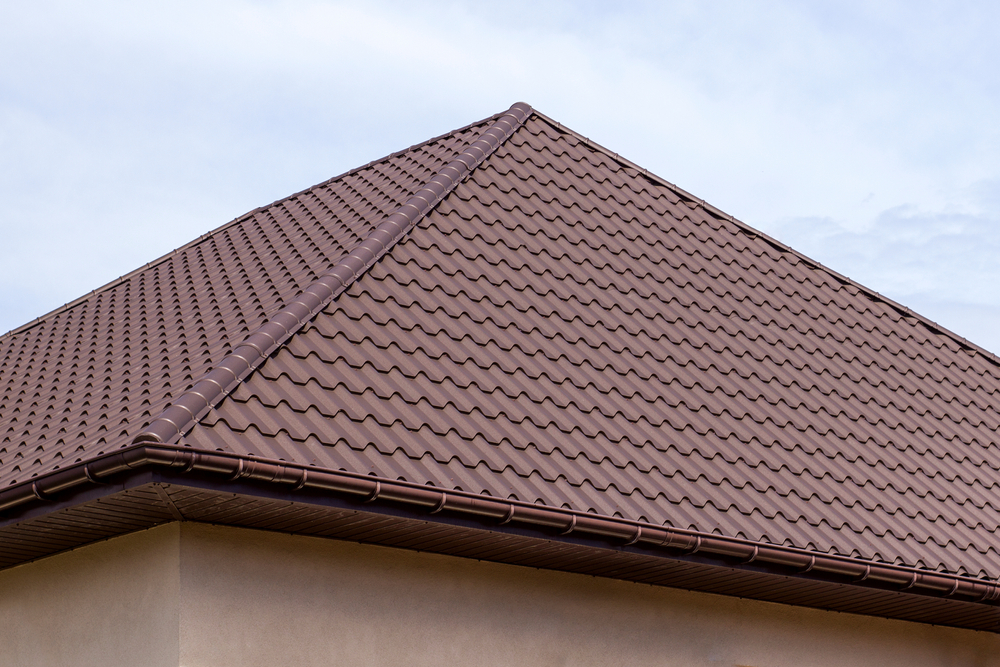
Hip roofs take gable roofs to the next level in terms of slope. While a gable roof has two slopes that meet at a point, a hip roof has four sloping sides that converge at a ridge, like a pyramid with the tip cut off. A hip roof tends to dominate the house’s exterior, and most of the roof can be visible from the outside.
Pros:
- Greater interior space and height
- Allow rain and debris to easily slide off roof
- Good ventilation
- Design facilitates visual inspection
Cons:
- Susceptible to water damage at ridge line
- Requires significant structural stabilization
- Prone to wear and tear over time
- Potentially expensive maintenance and tile replacement
- Not energy efficient due to open interior spaces
Dutch Gable
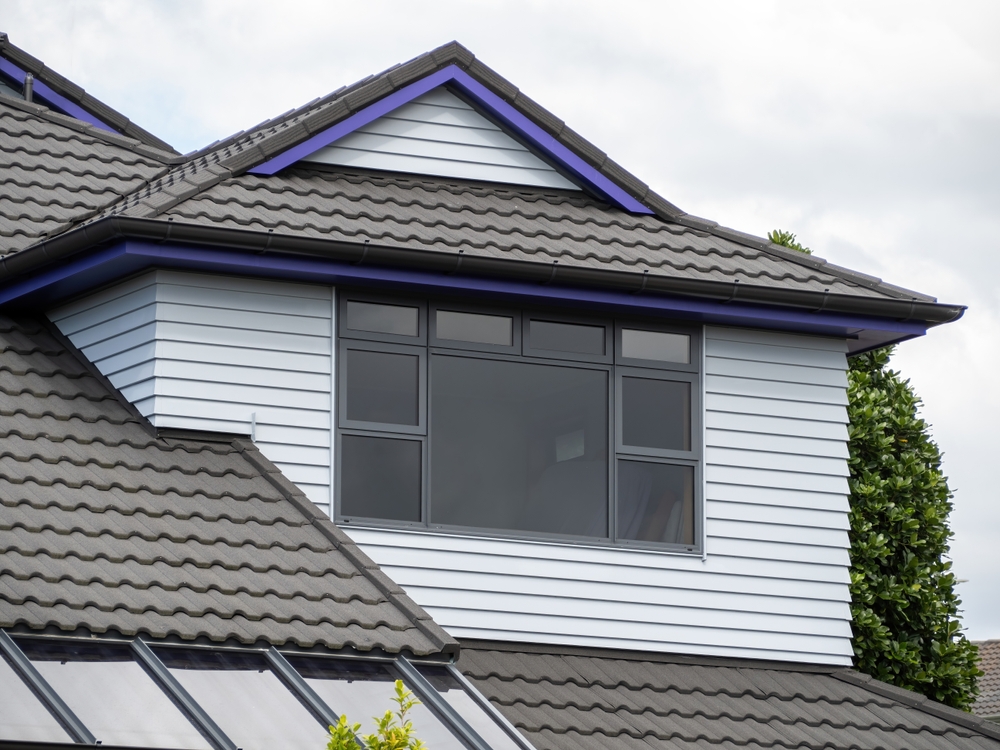
A Dutch gable roof combines a traditional gable roof with a hip roof, creating a double-layered look. The gable roof sits on the hip, with the hip forming a “skirt” around the gable. In many neighborhoods, the Dutch gable can help a house stand out with this extra design element, lending an elegant European flare.
Pros:
- Maximizes interior height and space
- Excellent ventilation
- Inset windows enhance natural light and cooling
- Unique and eye-catching design
Cons:
- Significant installation, maintenance, and repair costs
- Do not increase roof’s functionality or longevity
Gambrel Roof
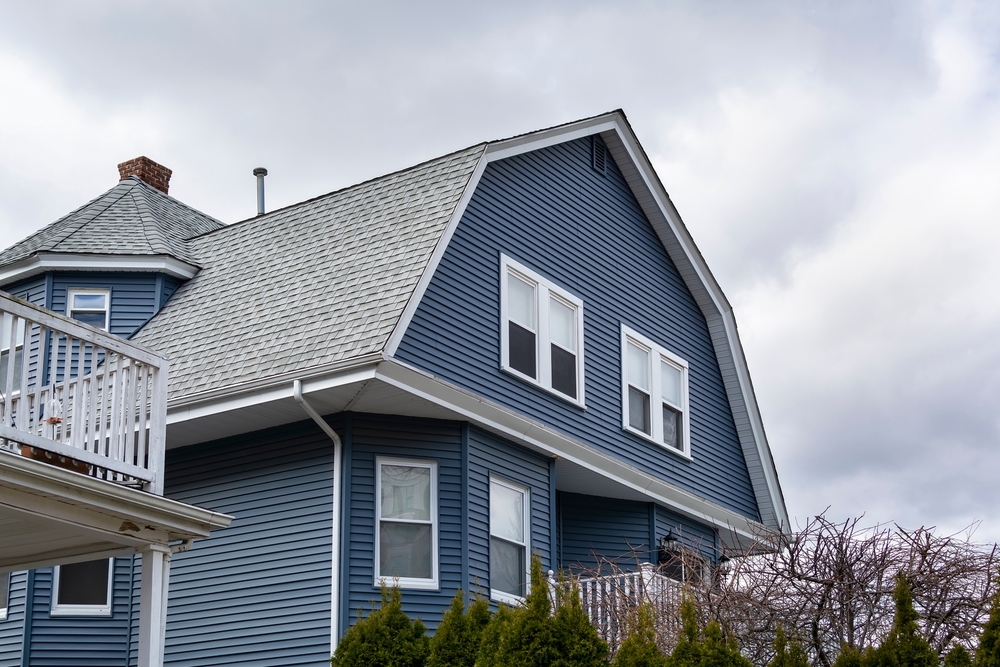
Gambrel roofs are a step up in design from simple gable roofs. In a gambrel roof, the slopes on either side of the central ridge are divided into two parts, resulting in a steep lower section and a less angled upper portion. Homeowners in farm areas favored this design for barns, which can allow for a massive attic. Gambrel roofs bring a charming Dutch flair to any residence.
Pros:
- Adds significant space for attics and storage areas
- Easy installation and maintenance
- Less expensive to install than other popular designs
- Excellent drainage for water and debris
Cons:
- Snow and debris may accumulate and damage the top ridge lines
- Large attic spaces may require added structure support to prevent wind damage
- More expensive to repair and maintain than traditional gable roofs
Mansard Roof

A mansard roof is a French innovation from the 17th century and adds a striking appearance to any residence. Basically a cross between a hip roof and a gambrel roof, the mansard roof typically features a bottom layer with large, steep slopes on all four sides of the house, topped with a gentler slope that intersects in a central ridge. This space on top allows for an extra room at the top of the house.
Pros:
- Maximizes height and interior living space
- Excellent ventilation and natural light when paired with inset windows
- High-end aesthetic appeal
Cons:
- Significant installation, maintenance, and repair costs
- Materials and service provides may be difficult to source in the US
- Vulnerable to damage in high winds and snow
Flat Roof
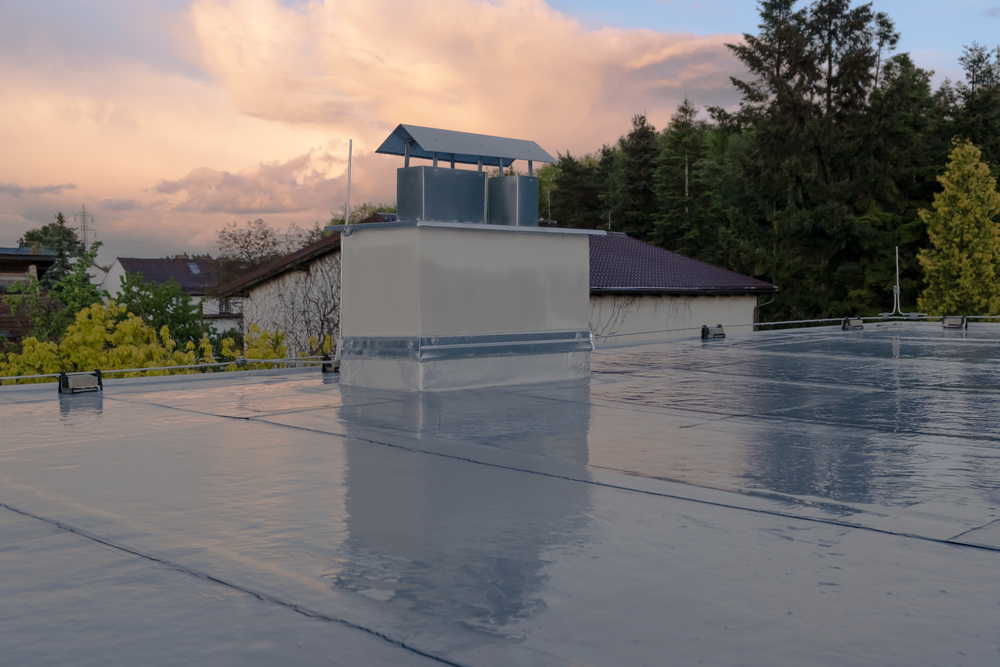
Flat roofs are among the simplest styles for any residence. A single roof sits on top of the house, creating a box-like exterior with an even interior ceiling. Flat roofs in themselves may lack ornamentation, but many homeowners have found them quite versatile. With a little imagination, a flat roof can do more for your home than keeping your stuff dry.
Pros:
- Accommodating of extra living spaces, from gardens to sheds
- Easy to install solar panels, skylights, air conditioner units, and other features
- Less expensive to install than a slope roof
Cons:
- Poor drainage; vulnerable to water and debris damage
- Difficult to keep clean
- Plain design may not appeal to some homeowners
Dormers
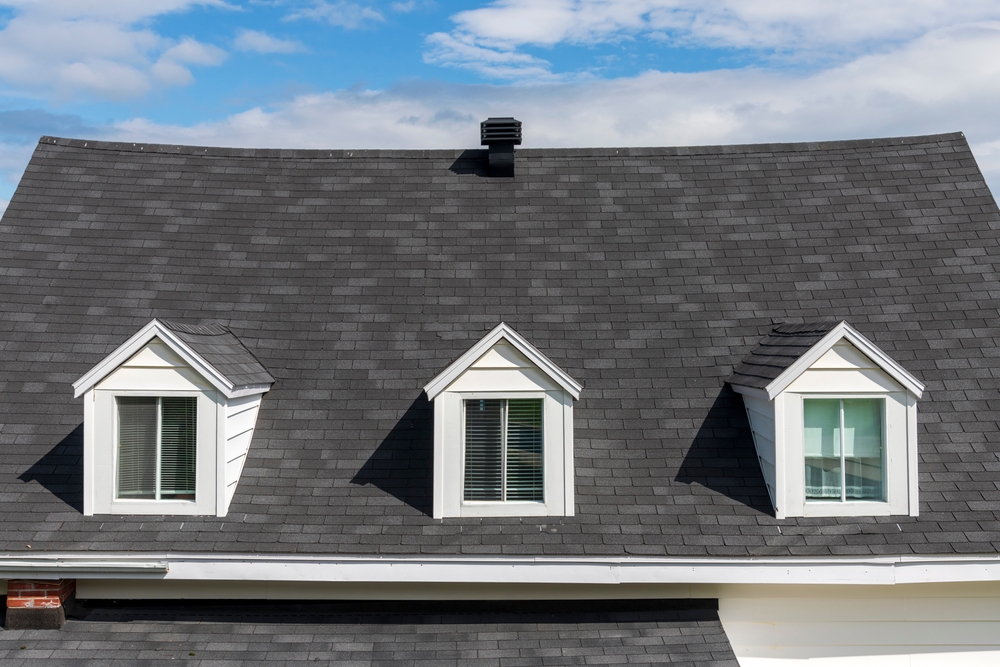
One of the more elaborate roofing styles, dormers are popular in both coastal and farming areas, where there’s plenty of sun. Dormers are windowed extensions that rise from a sloped roof, which allows extra light into the vaulted interior. A dormer can indicate where a homeowner added an extra small room, like a nook or attic. From the exterior, dormers add dimension that breaks up a uniform slope.
Pros:
- Enhanced aesthetic appeal
- Additional living spaces increase the market value
- Maximizes natural light and ventilation in the ceiling spaces
Cons:
- Expensive to install, maintain, and repair
- Poor drainage of water and debris
- Requires significant maintenance of roof and windows
Shed Roof
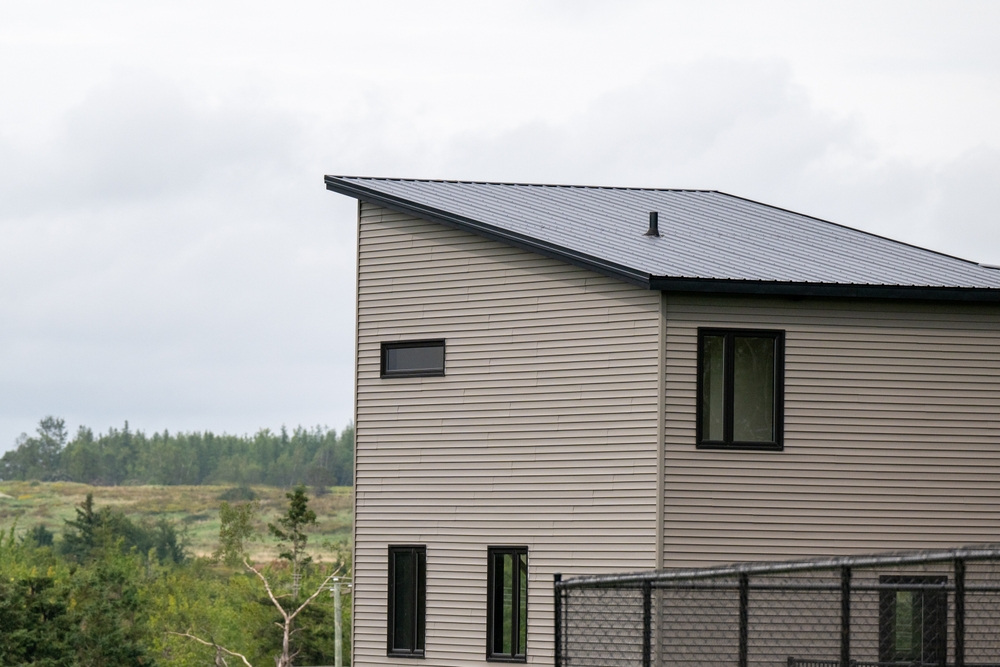
Shed roofs convey a simple and modern look in many recent development areas. A single slanted roof creates a ridge along one corner and a slope that descends on the other side of the house. Shed roofs are easy to build and can create a unique aesthetic that catches the eye.
Pros:
- One of the most affordable roof styles
- Accommodates a variety of roofing materials, including metal, asphalt, and clay tiles
- Excellent water and debris drainage
- Easy to install
- Simple skylight installation
Cons:
- Not ideal for large houses due to low ceiling height at slope end
- Requires large gutters at the end of the slope
Butterfly Roof
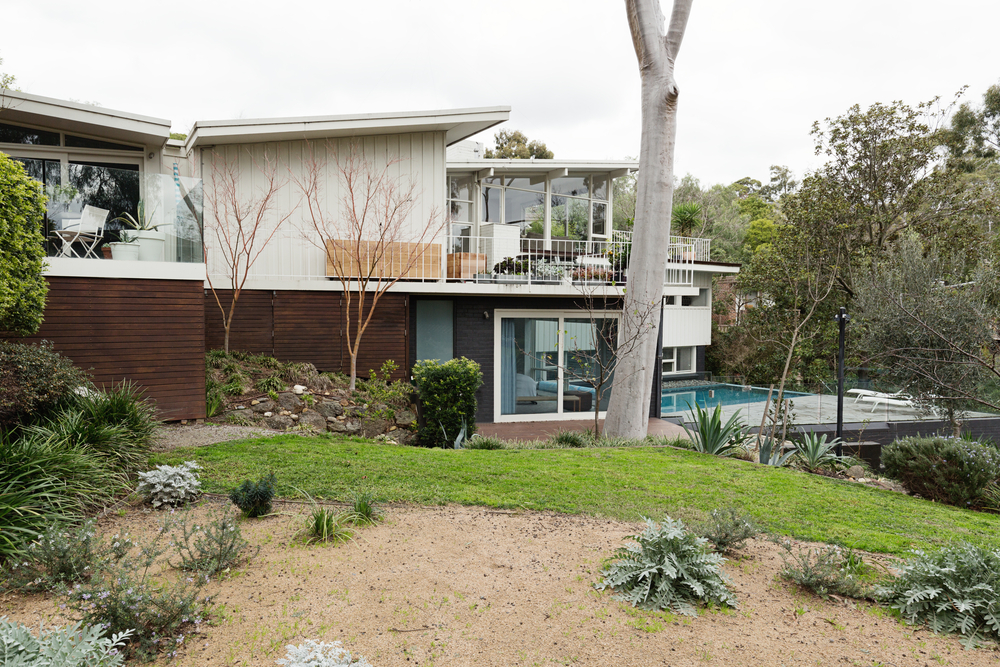
One of the most eye-catching roofing styles, a butterfly roof basically flips the gable roof upside down, creating a V pattern. A central valley slopes upward on either side toward the eaves, which are the highest points of the house. In the interior, the perimeter walls extend upwards, which creates more room for windows and airflow. When it rains, water pools in the valley and then cascades over the side through a drain.
Pros:
- Significant natural light and ventilation
- Excellent heat retention to maximize energy efficiency
- Low central ridge design enables rainwater collection
- Extremely resistant to high winds
Cons:
- May require additional reinforcement to support added weight at roof’s center
- Vulnerable to damaging debris and obstructions at the central ridge
- Significant glare and interior heat build-up in warm climates
- Expensive to install and maintain
Saltbox Roof
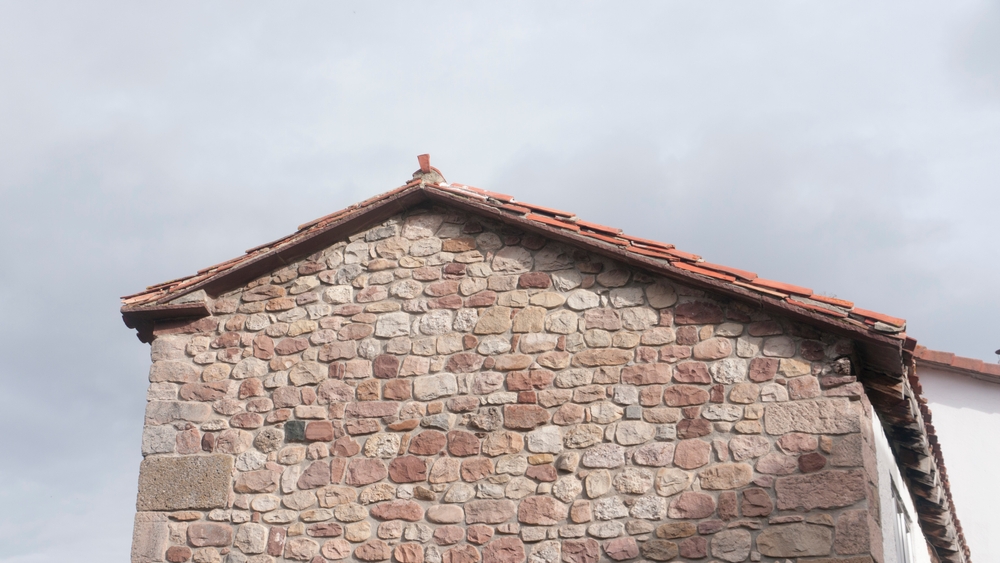
A saltbox roof dates back to the colonial era and has a unique aesthetic to top off a 1.5 story house. The front of the house has two stories, and the roof has a short, gentle slope while the back of the house has a larger, steeper slope that descends over the single story. This asymmetrical design is ideal for New England’s heavy rain and snow seasons.
Pros:
- Unique and aesthetically pleasing design
- Rain and debris easily slide off the roof
- Asymmetrical roof design is structurally strong
- Easier to maintain than gable roofs
Cons:
- Low ceiling height and limited space at far end of the slope
- May be difficult to design and install
A-frame Roof
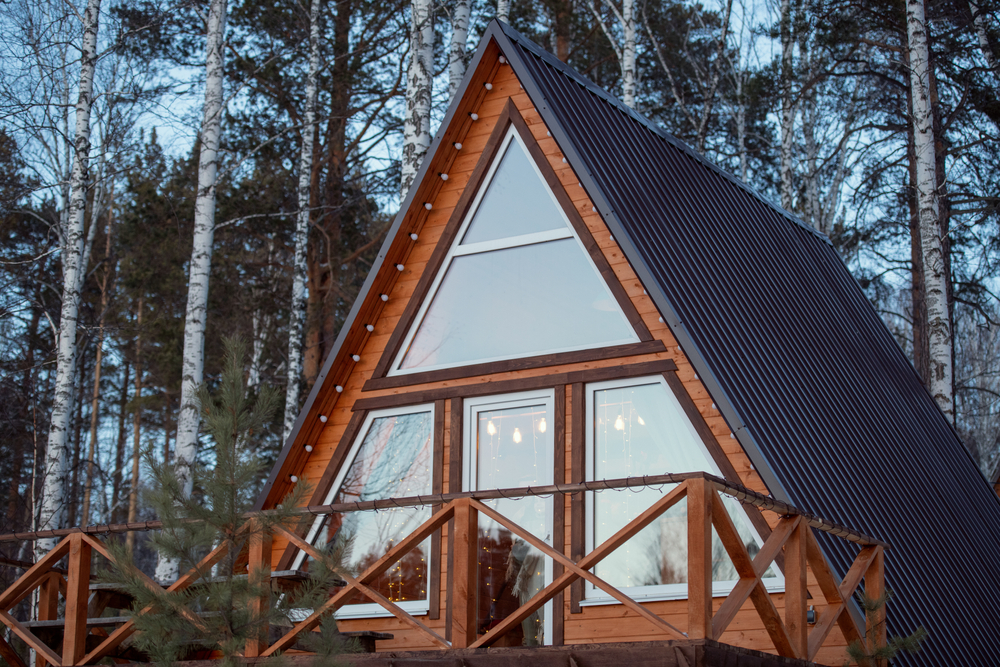
An A-frame roof is a gable roof taken to an extreme form. While basically the same shape as a gable, an A-frame has a much steeper angular slope, creating a large first floor and much smaller second or even third story. While the A-frame boasts a very high ceiling, making the living spaces comfortable may require some extra work to maximize this advantage.
Pros:
- Significant visual appeal
- Excellent drainage and ideal areas with heavy rain and snow
- Easy to add skylights to maximize natural light
- Good ventilation and airflow
- Easy to install
Cons:
- Limited second floor space
- Upper stories may be require spiral stair access, which can be challenging for residents
- Difficult to inspect and repair
- Does not allow for interior insulation or support structures due to A-frame design
M-shaped Roof
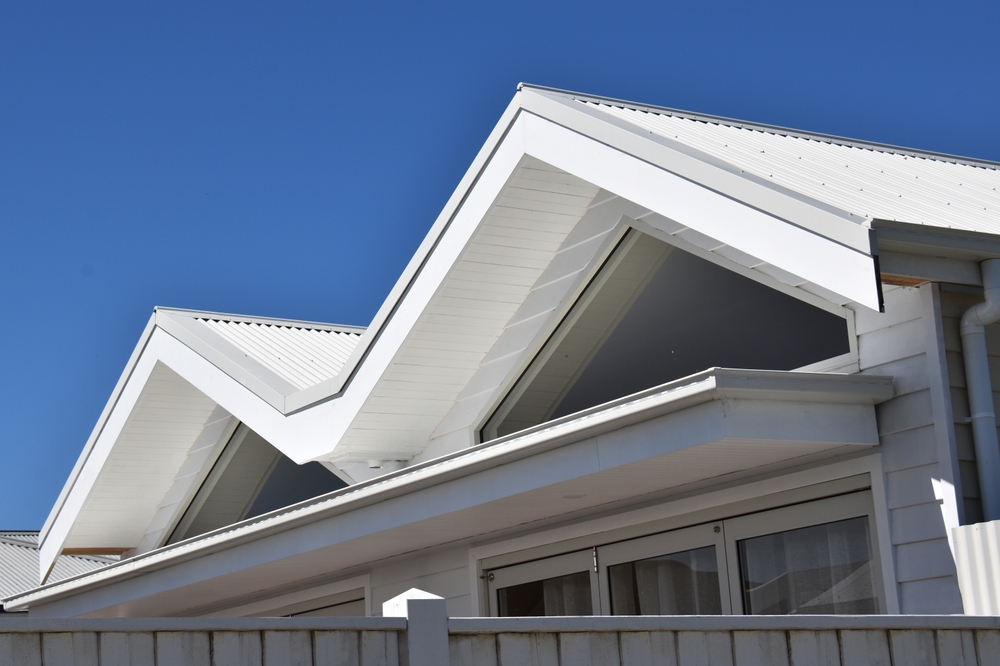
An M-shaped roof consists of two (or more) gable roofs aligned together, creating a series of slants and valleys in a uniform pattern, like an M. Many homeowners typically associate these roofs with factories, but they have become trendy in certain neighborhoods.
Pros:
- Makes a strong aesthetic statement
- Peaks can provide extra living spaces
- Ample room for skylights and solar panels
Cons:
- Expensive to design, install, and maintain
- Debris can accumulate in valleys
- Drainage requires extensive guttering
Designing a house has its challenges and rewards, but there’s no need to raise the rafters when it comes to your roof. From ornamenting your overhead with the fanciest ceramic shingles to letting the neighborhood kitty sunbathe on your hot tin roof, styles abound for every budget, lifestyle, and taste.
